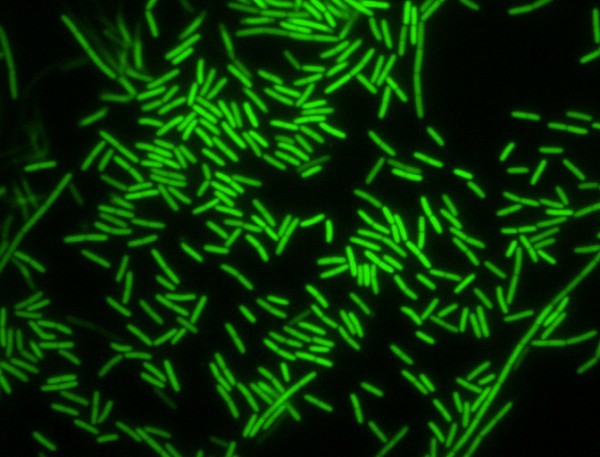
Research in the Griffith laboratory is focused on understanding how individual bacteria within a population communicate with one another to regulate biological processes as a group. Bacteria have historically been viewed as autonomous organisms; however, it is becoming clear that individual bacteria in a population work in concert to perform a variety of biological processes as a group.
Many of these processes have significant biomedical importance including the regulation of virulence factors, antibiotic production, the transfer of genetic information, and sporulation. Coordinating a group response requires effective communication between individuals in the population. Extracellular cell-cell signaling molecules provide the language for this communication. These signaling molecules come in a variety of different forms, analogous to different human languages and dialects, and allow bacteria to communicate privately with members of the same species (intra-species communication) and to interact with other species (inter-species communication).
The soil bacterium Bacillus subtilis serves as a model organism for studying bacterial communication. B. subtilis is non-pathogenic, amendable to genetic manipulation, and several regulatory pathways controlled by cell-cell signaling in B. subtilis are conserved among many different bacteria including pathogens and environmentally important bacteria. The Griffith laboratory is working to (1) identify novel cell-cell signaling molecules produced from B. subtilis, (2) understand how individual cells identify these signals, and (3) determine how this information is used to regulate biological processes during intra-species communication. Since bacteria seldom exist as pure cultures in nature and are often associated with many different species of microbes, the Griffith laboratory is also working to understand the molecular mechanisms governing inter-species cell-cell signaling within mixed populations of bacteria. By deciphering these bacterial languages and understanding the range of biological processes controlled by cell-cell signaling in B. subtilis, researchers in the Griffith laboratory hope to better understand how these processes are regulated in other bacteria.
Department of Microbiology